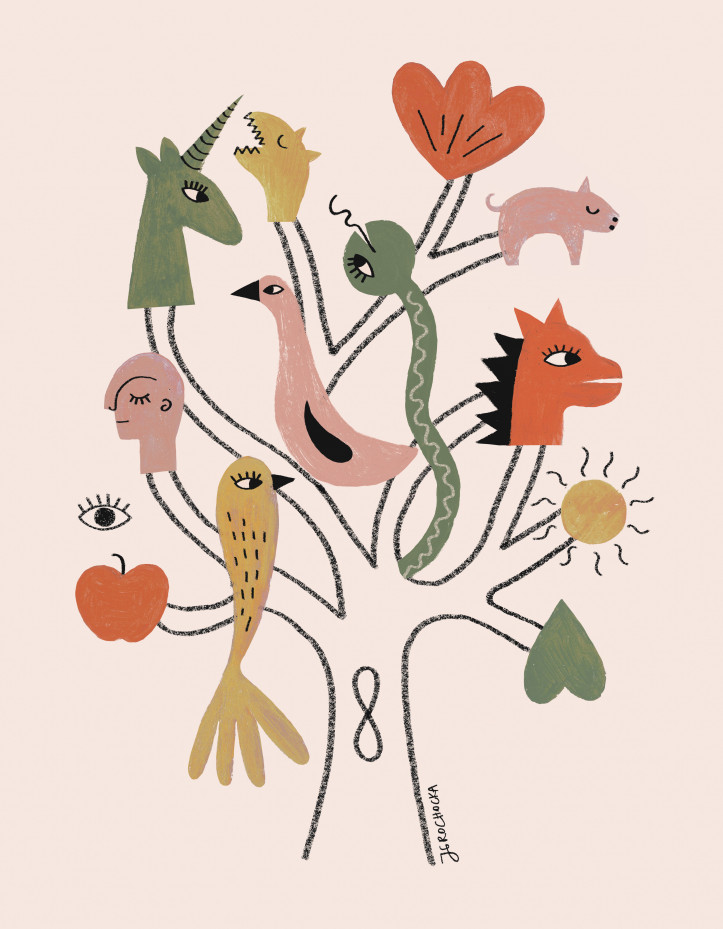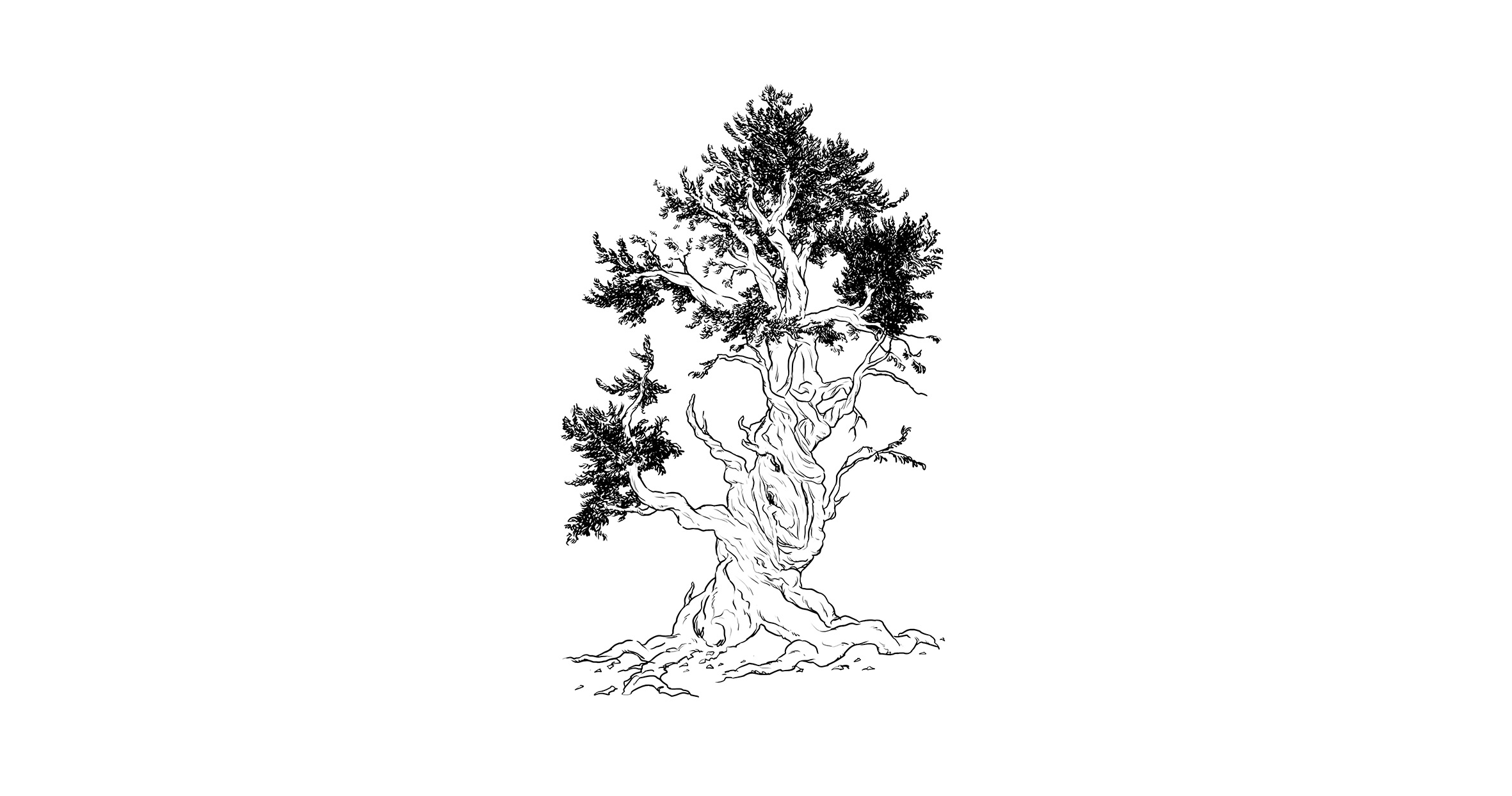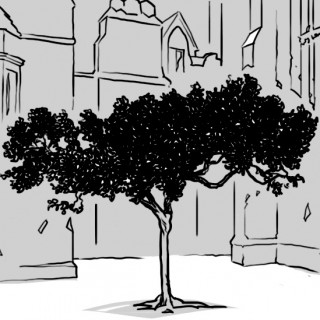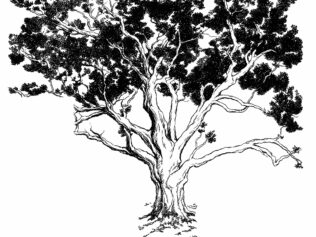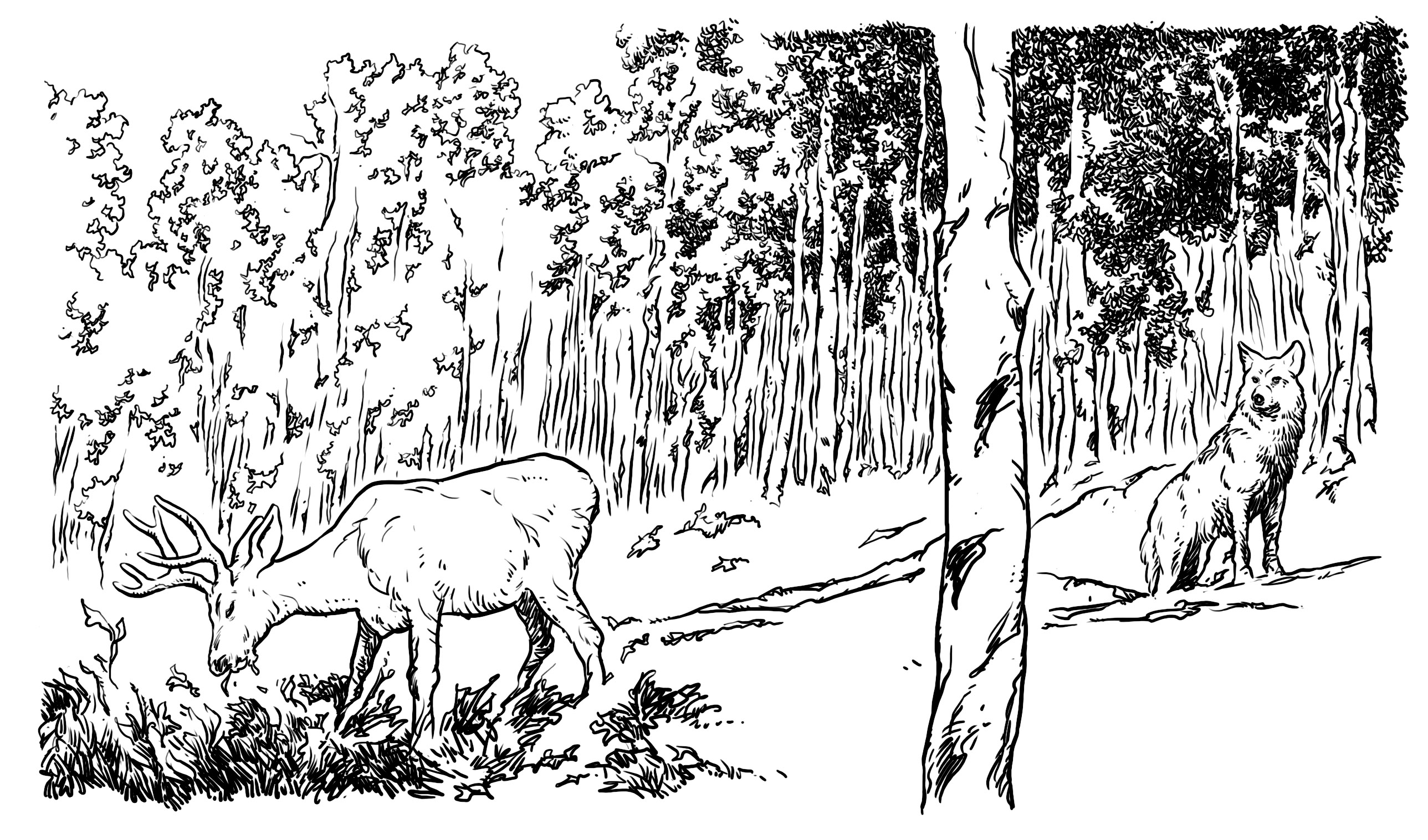
Trees aren’t just history’s witnesses, but also its characters. They participate in wars and feasts. They protect old stories, and create new ones.
Believe me, you will find more lessons in the woods than in books. Trees and stones will teach you what you cannot learn from masters.
—Bernard of Clairvaux
The Plane Tree
The Platanus, or plane tree, grew by a spring near the road, somewhere in Lycia (south-western Turkey, where Bellerophon killed the Chimera). The tree developed a dense crown, as vast as a small forest, and the individual branches grew as tall as separate trees. No wonder the leafy rustle of the great tree stretched across whole fields.
The interior of the trunk was empty and dry; the cave within was supposedly eighty feet deep (which probably referred to the circumference). The floor of the cave was paved with thick plane tree leaves, allowing the entourage of General Licinius Mucianus to spread out comfortably for lunch, away from the rain and wind. In addition to the Roman dignitary and his servants, the tree accommodated another eighteen people. While waiting for their meal, the travelers enjoyed the seclusion of the cave and admired its “walls,” which someone prudent had lined with pumice stone for better thermal insulation.
This plane tree cave, although several times larger, looked like many other hollow trees that foresters and road workers cut down these days out of a vague concern for public safety. It is hard to refrain from wondering what punishment Licinius Mucianus would inflict on them for this disgraceful practice, which is shamelessly––yet persistently––referred to as “greenery maintenance.”
The feast in the plane tree took place at the end of the first century CE, and now, two thousand years later, it is still remembered thanks to Pliny the Elder, who mentioned it in his book The Natural History in the chapter on trees. Thus, the author proved the great narrative power of trees, the strength with which they create places––one of the basic components of a story (along with plot and characters). Trees appear as a kind of memory anchor or time capsule, enabling the endurance of narratives from centuries ago. How Licinius Mucianus died is not known, nor what happened to the tree. But they are still spoken about.
Another plane tree grew outside the city of Velletri, roughly thirty miles southeast of Rome. The sprawling branches must have reached the ground, since a table and benches for fifteen people were placed beneath them. Yes, the crown must have been low; after all, even the plump emperor Caligula managed to climb up and feast in the foliage. Mocking the emperor’s obesity, Pliny the Elder claimed that he could provide his own shade, and plenty of it. In any case, Caligula referred to his meal as dining in a nest, and that is how it was remembered.
It is a similar story with the plane tree in Crete that never lost its leaves, under which Zeus and Europa lay, and the plane tree from the Isole Tremiti (Apulia region), along with its shadow, which was taxed. And the tree under which Socrates taught. And another, planted by Julius Caesar during the war near Cordoba. And also the plane tree from Lyceum, which had roots fifty feet long when it was young, according to Theophrastus. Platanus, a genus that––by my intuition––sheds new light on the name Plato. Perhaps the most academic name, and the most academic tree, in the world.
The White Poplar
An old lady in a colorful house dress. White hair, red face, crying at the edge of the path. It separates the village of Borki near Tłuszcz from the high embankment of the former Warsaw—St. Petersburg Railway (nowadays, this is the route from Warsaw to Białystok). I am crying, too.
I walk over and ask what happened, if she needs help, and she says they’ve cut down the poplar. I look: indeed, the trunk of an ancient white poplar, well over one hundred years old. The old woman snivels and says that when the trains carrying Warsaw Jews to Treblinka passed through Tłuszcz, people threw their children out of the carriages here in the hope that someone would save them. The children were usually killed on the spot and buried near the embankment, so there are many unmarked graves here. And that once, a young Jewish woman jumped out, and the Germans caught and shot her under that poplar. And now the poplar is gone, as if the Jewish woman has been deprived of her grave. A place of remembrance for her, and for those children.
Most of the boughs had died. The fruiting bodies of mushrooms were protruding here and there. Probably only the one leader branch was still alive. Nonetheless, such Methuselahs should be protected, retained as natural monuments. Even when they lose their last green branch, they can be veteranized (properly trimmed) and left as “witnesses of history.” Was the old lady crying for the lost tree, or the lost story? Or maybe for a childhood memory of playing under that poplar? Her mother punished her for it––after all, playing on a grave was not allowed.
I didn’t ask, because I myself had just been bawling at the sight of five ancient pines that were felled a little way away. The oldest was about 150 years old. It cast a shadow over everything that had happened here since the national mourning following the January Uprising. When I looked at the felled pines, I was certain there was something that I would never know. That I hadn’t made it on time.
The Linden
Two baroque lindens, magnificent and healthy, frame the vista of the ruins of St. Anthony’s Catholic Church in Jałówka, Podlasie. I hesitate for a while before entering the courtyard, so as to remain in their silence-generating shadow. Then a voice comes from the heavens: “When this church was f—ing smashed to bits in 1944, the priest’s heart broke, here, under these linden trees.”
The F-word isn’t really used in heaven, so I search for its source on earth: there it is. An old man at the roadside, right behind me; an entirely ordinary granddad, gray, with a cane, in a woolen sweater, with the features of all old people from Podlasie. And a story about how the Germans blew up a church during their retreat in 1944.
Two years after this event, in 2018, as I am looking at the stumps of those lindens, I wonder if the old man might have been wearing slippers. After all, he appeared so quietly. I also wonder what will happen to the story, since the linden trees––the place of its action––are no more. Is it safe? Will it survive, uprooted?
The Pear Tree, the Spruce, and Somethin’
I ask her where I can spend the night here, and she says that her legs hurt a lot and that they go walking of their own accord to pick cherries while she’s asleep. And I can sleep under the tree. When she returned from deportation with her family during the war, the house had been burnt down. The front passed through Masiewo. And while the house was being built––come see how nice it is––they lived under the pear tree––come see, how nice. The roof was somehow patched together, in the summer there was no roof, so sometimes a pear would fall on someone’s head. They displaced the village? Yes, at the end of the village, where that big tree is––see, a linden or somethin’. That was the gathering place, and people were taken from there by car.
Three miles from Krotoszyn, by the road to Sulmierzyce, there is an ancient oak under which, according to local stories, Lord Rozdrażewski summoned the local population to fight against the Swedes. Whenever travelers pass the tree, the story is told anew.
In 1813, in the village of Mrowiny (Żarów district), a group of French soldiers were buried. On their graves, an oak tree was planted, which was quite magnificent a century later. Tradition also says that “often on the hill near the French oak, the priest held so-called ‘forest masses.’”
One German family from Hamburg had a story about ancestral treasure hidden after the war in Lubomierz, Lower Silesia. The descendants of the provident grandfather found this treasure in 2016. The topographical anchor of the family legend, which turned out to be true, was a spruce.
The Place
Any distinctive location with good coordinates can protect a story and be its anchor: an old bridge, a peasant cottage, a chapel. A bend in the river, a rock, or a gravel pit. But the tree is different from all other places in the world in that it is alive. It is a living place. It is therefore both the scene of the action and a character in the story––a secondary character, perhaps, but still. Perhaps that is the reason for the overwhelming impression that trees have something to tell. An online search for “trees tell stories” brings up the following results: “What tales do trees tell?,” “What trees say about tennis,” “Every tree tells a story,” “Storytelling trees,” “Tree rings tell us about the climate,” “The trees in Poland’s Nysa speak!”
The mere presence of the magnificent narrator trees––which are called, after all, the witnesses and guardians of history––gives them a reflective value and a cathartic function. The details of what happened under the Dunin Oak (in the village of Przybudki, Podlasie) may not be clear, but a lot happened, that is certain. Standing in its shadow and remembering the times when shadows were associated with divine protection, and even with the Holy Spirit, one can sense the mystery, and understand that not everything is visible. One can ask locals or a guide about the age of a tree, and attempt to place the tree on the chronological axis of the history of this part of the country, or the world in general. And to find oneself there.
This was felt keenly by Jerzy Stempowski in his book devoted to the old places around Bern, Ziemia berneńska [The Bernese Land]. For example, he was able to recreate the arduous uphill journey of horse-drawn carts thanks to the ancient elm under which the horses took a break from the sun and the insects. Adam Robiński also read the landscape rather well in his books Kiczery Podróż przez Bieszczady [Peaks: A Journey through the Bieszczady Mountains] and Hajstry. Krajobraz bocznych dróg [Storks: The Landscape of the Side Roads].
In his description of the Swiss countryside, Stempowski wrote, “trees usually grow where they were planted by people of the age of enlightenment. When asked, they tell their story composed not only of events, but also of the hopes, dreams, and feelings of the people living at that time. Then a dust of memories, comparisons, associations, and quotations rises from under the feet of the attentive passerby.”
When the old-growth forest is mindlessly felled, all of this is lost (the old-growth forest is also the individual tree). If only someone could explain that to the foresters and road workers.
